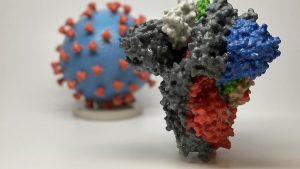
[Reprinted: Lancet Global Health, 5-6-2020]
Although this article focuses on sub-Sharan African countries it also applies to many developing countries in Latin America and the Caribbean.
As low-income countries in sub-Saharan Africa respond to coronavirus disease 2019 (COVID-19), underlying health system quality must be carefully considered and included in the design and delivery of services. What works in high-income settings might not translate to low-income countries if the quality of health care at baseline is poor and, although steady and impressive progress on quality has been made in some low-income countries,1 concerning gaps remain. Studies show that providers in these contexts often perform less than half of the most basic elements of a high-quality visit; equipment and supplies continue to be a challenge; and clinical outcomes directly amenable to high-quality care, such as early neonatal mortality, continue to be poor. In The Lancet Global Health, Timothy Powell-Jackson and colleagues make an important contribution to this growing literature on the quality of care and, unfortunately, document similarly troubling shortcomings, this time for provider infection prevention and control behaviours. As COVID-19 cases rise in sub-Saharan Africa, Powell-Jackson and colleagues’ analysis is a clarion call to urgently attend to the basic quality of services provided in the health system.
Powell-Jackson and colleagues performed a secondary analysis of observations of infection prevention and control behaviours in 220 Tanzanian facilities in 2018. Correct hand hygiene was observed 6·9% of the time, reusable equipment disinfected 4·8% of the time, gloves appropriately used for 74·8% of indications, and waste correctly managed in 43·3% of cases. The study also showed that nurses, midwives, and nursing and medical assistants were significantly more likely than assistant medical and clinical officers to wash their hands appropriately or use gloves .
The Article stands out for several reasons. First, the authors describe processes of care, a meaningful departure from the more common quality study that focuses on inputs such as infrastructure and equipment. Although inputs are certainly necessary for delivering high-quality care, processes of care bring us closer to understanding the actual impact of quality on outcomes. Second, they turn their attention to a component of quality—infection prevention and control—that receives relatively little attention in the literature on quality. Third, their results are remarkably consistent across facility types and do not suffer from the typical Hawthorne effect: providers do not improve their behaviour because they are being observed. Poor infection prevention and control compliance appears to be a norm, not an exception, in this sample of facilities.
These findings would be deeply concerning under usual circumstances. In the setting of COVID-19, they are cause for serious alarm. Ensuring that providers adhere to the most basic infection prevention and control guidelines is fundamental to a successful response to COVID-19. It will be especially important for ring fencing or protecting essential non-COVID-19 health services, such as antenatal care. Personal protective equipment will no doubt be limited in sub-Saharan Africa, as it is elsewhere in the world, and reserved for wards caring for patients with COVID-19. Providers delivering essential but routine health services will need to rely on the basics like frequent handwashing. In addition to preventing infection, demonstrating provider compliance to communities could build population confidence in essential health services and prevent morbidity and mortality for non-COVID-19 conditions, as we saw during the Ebola virus epidemic in west Africa.
Although describing processes of care is the more sophisticated approach to measuring quality, the lack of information on inputs in Powell-Jackson and colleagues’ study means that it is difficult to use their results to diagnose the root causes of poor infection prevention and control. From an implementation perspective, it is tempting to assume that making gloves, soap, and personal protective equipment available will translate into fewer nosocomial infections. This pragmatic approach might be especially appealing during an emergency, where more complex interventions targeting behavioural norms seem daunting or impossible to implement. However, quick fixes rarely work to improve quality, and this temptation must be flatly ignored if health systems are to effectively deliver life-saving care and avoid being a vector for transmission of COVID-19.
Powell-Jackson and colleagues highlight the enormity and complexity of this challenge: multifaceted interventions, large financial inputs, attention to systems-level causes of poor infection prevention and control, and more research are needed. Somewhat counter intuitively, complex adaptive system theory would suggest that simple rules, not complex machinery, are needed. These rules should create a vision for infection prevention and control compliance, prohibit poor compliance, and incentivise appropriate infection prevention and control behaviours.
To facilitate accountability, the vision for widespread provider compliance with basic infection prevention and control guidelines will need to be set at the highest levels of leadership and cascade through health system management. Existing health system structures, such as direct facility financing, will need to be quickly leveraged to create incentive structures for compliance, and prohibitions against unsafe care need to be clearly and widely disseminated within the health system and to communities. Powell-Jackson and colleagues document serious shortcomings in the quality of health care in some contexts, but their findings also point to an important opportunity—with national and international attention turned to COVID-19, leaders can choose to make quality a priority and guide the health system towards an effective response.